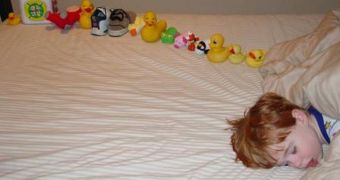Scientists have been arguing that autism and related disorders have a genetic basis for quite some time now, and some researches succeed in showing tantalizing evidence that that may be the case. In new study, a research team in the United States demonstrates for certain that gene variations are involved.
The group, based at the Cold Spring Harbor Laboratory (CSHL), determined that the deletion of a 27-gene cluster on chromosome 16 is responsible for causing autism-like symptoms. This is one of the most common genetic alterations that researchers discovered in people showing disease symptoms.
While other studies have hinted at this, the CSHL team was able to demonstrate the connection using genetically-engineered mouse models. Experts thus obtained the first functional evidence of the role the modifications of the 27-gene cluster play in triggering autism.
Researchers used a study technique called chromosome engineering on the unsuspecting rodents. This allowed them to change the genetic traits of the animals, by deleting the troublesome gene. The animals immediately began to display symptoms related to autism.
A scientific paper describing the findings was published in the October 3 issue of the esteemed journal Proceedings of the National Academy of Sciences (PNAS). The investigation was led by CSHL professor Alea Mills.
“Children normally inherit one copy of a gene from each parent. We had the tools to see whether copy number changes found in kids with autism were causing the syndrome,” the team leader explains.
“The idea that this deletion might be causing autism was exciting. So we asked whether clipping out the same set of genes in mice would have any effect,” Mills adds, referring to a discovery made in 2007 by CSHL professor Michael Wigler.
The expert was the first to discover the chromosome 16 deletion, which affected as many as 27 genes in a portion of the genome called 16p11.2. The new study basically picked up where the other team left off.
“Mice with the deletion acted completely different from normal mice,” Mills Lab postdoctoral fellow and first study author Guy Horev says. Some of the behaviors the modified mice exhibited included hyperactivity, difficulty adapting to a new environment, sleeping deficits, and restricted, repetitive behaviors.
“Alea Mills has created a valuable resource for everyone engaged in autism research. The technical skill is extraordinary in creating mouse models bearing a human genetic variant that has been associated with autism,” comments the director of Life Sciences and Simons Foundation Autism Research Initiative (SFARI), Dr. Gerald Fischbach.

 14 DAY TRIAL //
14 DAY TRIAL //